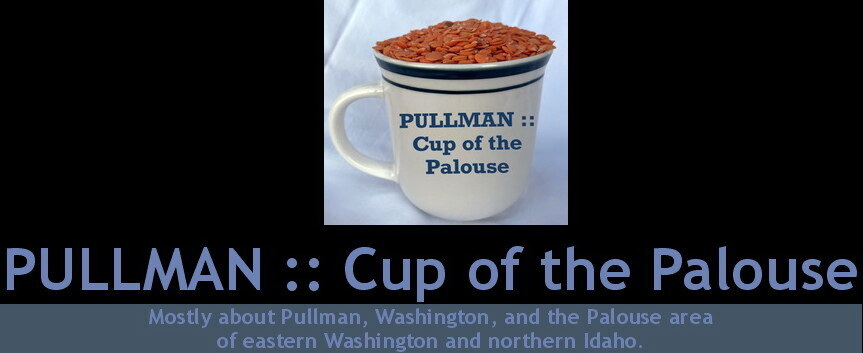Note: Colton is about 15 miles south of Pullman
.....................................................
Framing the sky: WSU master's students research, propose new ideas for Colton grain silo
By Christina Lords
Moscow Pullman Daily News
November 8, 2010
About 130,000 nails reinforce hundreds of 2-by-4s in a worn grain silo in Colton.
When it was functional, the silo could store 60,000 bushels of grain, said owner Jim Dahmen. Now, open to the sky, it envelops nothing but air.
Its raw exterior exhibits signs of forgotten white paint, but for the most part, its stripped exterior is a defiant testament to its 50-year affront from the Palouse's elements.
The silo has been the subject of a master's architecture class taught by Washington State University associate professor Taiji Miyasaka.
An exhibition held Sunday afternoon outlined the work of 18 architecture graduate students who began researching the grain silo in August.
The compiled information, which includes interviews with Colton residents, maps of the quality of the structure and analysis of its materials, addresses the silo's past, present and future, said WSU master's student Rachel Doherty.
"We had students do I-don't-know-how-many interviews with people in Colton to see what they thought of the silo or if they knew its history," she said. "A lot of them said, from farmer's perspective, that if it doesn't work anymore, then it needs to be torn down or they don't need it. But there's some real beauty here."
The rhythm of the woodwork and the silo's opening, which used to be covered by a grain elevator, gives an unusual perspective and framework of the sky, she said.
Students were able to focus their efforts on how to improve different aspects of the silo, such as the
interior, exterior or entrance, Doherty said.
Two of the graduate students, Bobby Olsen and Jon Follett, set up a camera to capture photographs of the sky from inside the silo every 30 seconds during the day and every 40 seconds at night.
The movie is made up of 2,646 photos and was shot in September. Viewers can see cloud formations roll by and rotating constellations at night.
Some aspects of the students' project are already being implemented, such as the construction of chairs at varying inclinations in the silo to view the sky and a proposal to purchase a 5-foot by 3,500-foot strip of fabric to connect Highway 195 to the silo.
The fabric, which is the same material used to protect hay bales, should be put into place sometime this month, Doherty said.
"We're not necessarily trying to save the silo, but we are trying to create a theme of awareness of this place," she said.
One proposal for the silo would tear it down and reconstruct it as a gathering place for a WSU museum on campus near Martin Stadium, Miyasaka said.
